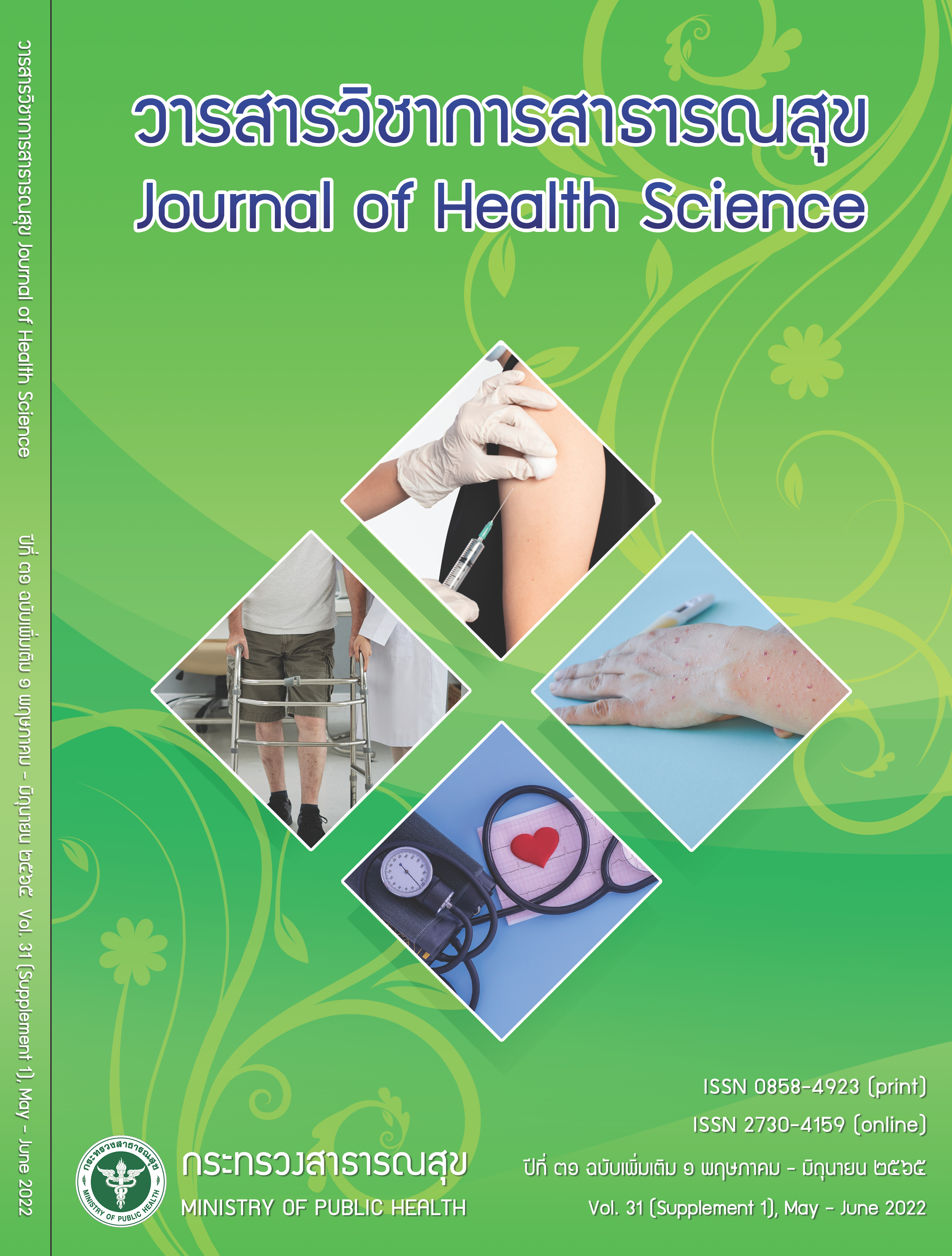Development of a Seamless Psychiatric Care Service System in the Service Area, Yasothon Province
Keywords:
system development, seamless psychiatric care, psychiatric patientsAbstract
The purpose of this research and development was to develop the psychiatric care system and to study the results of the psychiatric care system development in the health service area of Yasothon Province. The sample is divided into 2 groups, consisting of 56 mental health personnel, 5 experts, 300 psychiatric patients and relatives. The tool used to create the system was the Technology of Participation (ToP) technic which was reviewed and tested by 5 experts. Additional tools included a monitoring form in accordance with the psychiatric care plan, and a satisfaction assessment form for personnel and patients’ relatives Data were analyzed by using frequency, average, standard deviation, and paired sample t-test. The results of the research revealed that the construction of the system began with the mobilization of participation of mental health personnel at all levels, from the community to the province. By analyzing problems, planning, creating a clinical care guideline together from the community level, hospitals within the communication system were linked to work smoothly There was capacity development activities for personnel at all levels. There was a system of doctor’s consultation and referral, building patient monitoring and surveillance tools using the resource sharing model to provide psychiatrists for adequate services. After the establishment of the psychiatric care system, it was found that the service rate in the medical care system increased from 64.11% to 90.44% (proportion difference of 26.33, 95%CI 19.96 to 32.70, p<0.05). The referral rate of cases in crisis increased from 92.43% to 98.32% (proportion difference 5.89, 95%CI 2.56 to 9.33, p<0.05); and the refer-out rates was reduced by 84.31%. The results of the quality inspection of service systems by experts revealed a good quality level. The satisfaction score of personnel increased from 65.45% to 92.33%; and that for the relatives increased from 64.97% to 95.23%. In conclusion, the service system according to this seamless psychiatric care guideline had provided efficient seamless care for the psychiatric patients with inter-connection among service providers at all levels resulting in the increased access to efficient service systems. Therefore, this model should be widely promoted for the use in all public health facilities.
Downloads
Downloads
Published
How to Cite
Issue
Section
License

This work is licensed under a Creative Commons Attribution-NonCommercial-NoDerivatives 4.0 International License.







